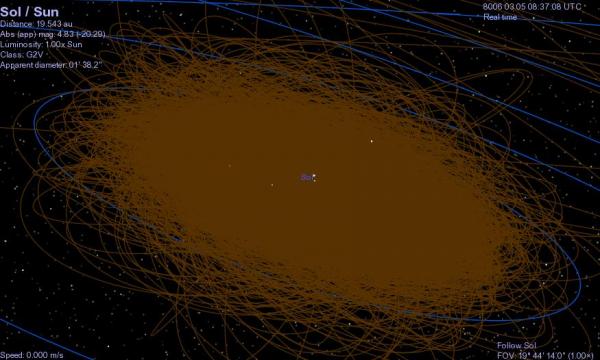BY LETTER
Sol Asteroid Belt
Galactography > Regions of Space > Inner Sphere
Galactography > Places and Locales
Galactography > Other Major Polities, Empires, and Meta-Empires > Solsys Organization
Galactography > Places and Locales
Galactography > Other Major Polities, Empires, and Meta-Empires > Solsys Organization
Asteroid Belt in the Old Solar System. | |
 Image from Copyright Lilly Harper | |
| A Rock Hopper Belter ship in the Solsys Belt. | |
Government: The Asteroid Belt is home to literally thousands of different governments, ranging in size from single habitat city-states, to nations or alliances encompassing hundreds or thousands of habs, asteroids, and computronium nodes. While all nominally independent entities, in practice millennia of long association and interaction have evolved a low key, but surprisingly effective federal structure in which local matters are handled by the various local governments while system or Belt spanning issues are the purview of the Solsys Organization and its hyperturings.
 Image from Steve Bowers | |
| The orbits of several hundred larger Solsys asteroids and their associated colonies are shown in this image | |
Low thrust shuttles and ferries ply between nearby rocks, while constant acceleration liners and the occasional boostbeam cross longer distances. The Transys is ever present, but less widely used due to a local preference for 'homegrown' systems.
Back to Solsys
Related Articles
Appears in Topics
Development Notes
Text by M. Alan Kazlev
Updated 7 November 2021 by Orion's Arm Editors
Initially published on 02 August 2002.
Updated 7 November 2021 by Orion's Arm Editors
Initially published on 02 August 2002.
Additional Information
Image 'Rockhopper Ship' copyright by Lilly Harper used with permission. Please contact her for conditions of re-use.






